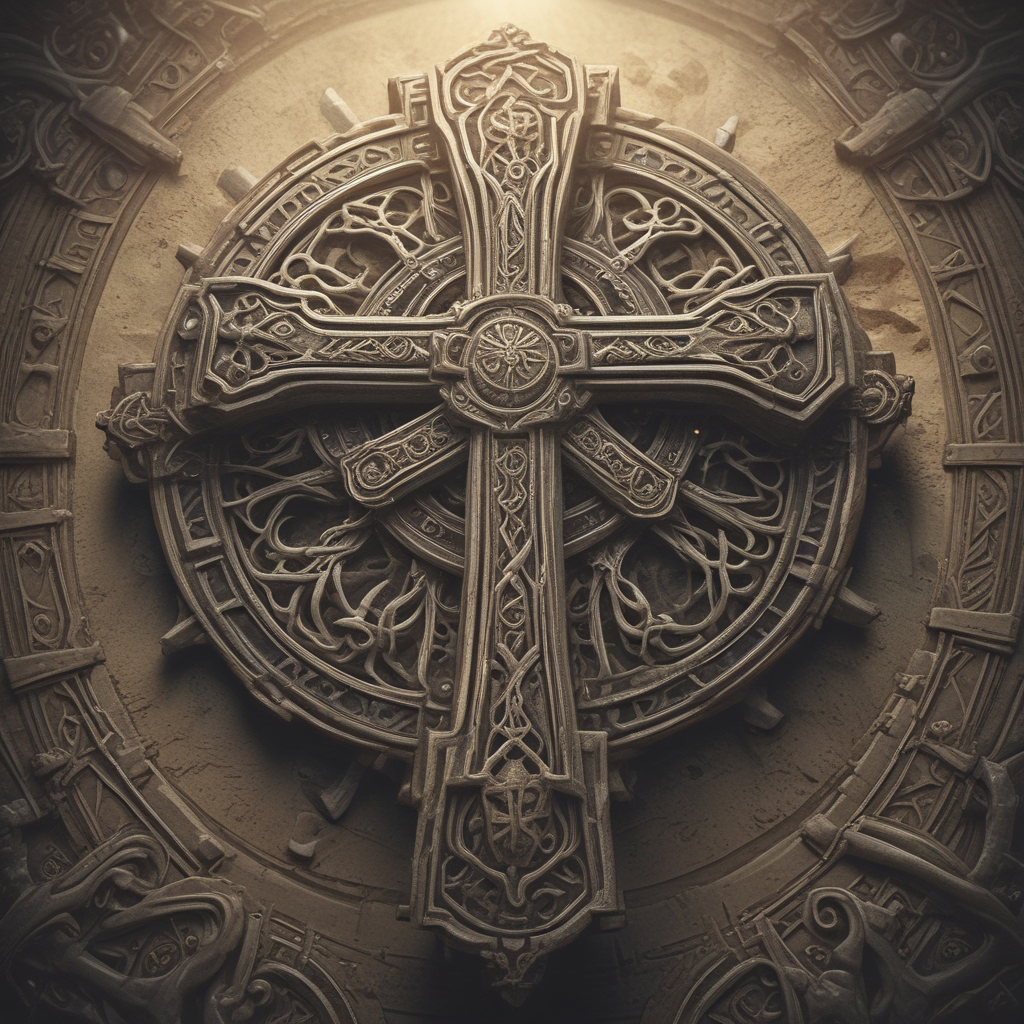The Cursed Necklace of Cleopatra: Love, Power, and Betrayal
1. Introduction
Cleopatra VII, the last active ruler of the Ptolemaic Kingdom of Egypt, is one of history’s most enigmatic figures. Known for her intelligence, political acumen, and dramatic love affairs, she has captured the imagination of many across the centuries. Among the treasures associated with her reign is a fabled necklace, rumored to be cursed, which symbolizes the intertwining themes of love, power, and betrayal that characterized her life and legacy.
2. The Historical Context of Cleopatra’s Reign
Cleopatra ascended to the throne in 51 BC, at a time when Egypt was a rich and powerful kingdom, but also vulnerable to external influences, particularly from Rome. Her reign was marked by significant political maneuvers, including alliances with powerful Roman leaders like Julius Caesar and Mark Antony. The political landscape was tumultuous, with Rome’s growing influence threatening Egypt’s sovereignty.
Jewelry and adornment played a crucial role in Egyptian culture, serving not only as personal decoration but also as a means of expressing power and status. The elite wore jewelry to signify their rank and divine connection, making Cleopatra’s treasures, like her infamous necklace, symbols of her authority and influence.
3. The Legend of the Cursed Necklace
The cursed necklace of Cleopatra is described as a magnificent piece of jewelry, adorned with precious gems such as emeralds, pearls, and diamonds, intricately crafted into a design that reflected the beauty and opulence of ancient Egypt. Its origins are steeped in myth, with stories suggesting that it was endowed with a curse that would bring misfortune to those who possessed it.
Throughout history, the necklace has been associated with key figures, including Cleopatra herself and her lovers, Julius Caesar and Mark Antony. Each of these individuals faced catastrophic fates, leading to speculation about the necklace’s malevolent influence.
4. Love and Romance: Cleopatra’s Relationships
Cleopatra’s love affairs with Julius Caesar and Mark Antony are legendary, transcending mere romance to become pivotal elements in her quest for power. The necklace, often seen as a gift or token of affection, embodied the intertwining of love and political strategy in her life.
- Julius Caesar: Their relationship solidified Cleopatra’s position in Egypt and helped her gain a powerful ally in Rome.
- Mark Antony: Their passionate affair was marked by political alliances and ultimately led to their downfall.
These relationships not only shaped Cleopatra’s personal life but also had profound implications for Egyptian politics, as they influenced alliances and conflicts with Rome.
5. The Role of Betrayal in Cleopatra’s Life
Betrayal was a recurring theme in Cleopatra’s life, impacting her reign and her relationships. The betrayal by her own family members, particularly her brother Ptolemy XIII, who sought to usurp her throne, set a dramatic backdrop for her rise to power. Furthermore, the betrayals she faced at the hands of her Roman allies had devastating consequences.
The necklace serves as a metaphor for this betrayal, as it was a piece that connected her to the men she loved, who ultimately betrayed her trust. The curse associated with the necklace symbolizes the treachery that surrounded her, as both love and betrayal were inextricably linked in her story.
6. The Necklace in Historical Accounts
Ancient texts, including writings by Plutarch and Appian, mention Cleopatra’s jewelry, including the cursed necklace. These accounts vary, with some emphasizing its beauty and others hinting at its ominous nature. The interpretations of the necklace’s significance have evolved over time, reflecting changing cultural attitudes toward Cleopatra herself.
Recent archaeological findings have unearthed jewelry from Cleopatra’s era, providing insights into the aesthetics and significance of adornments in her court. This evidence reinforces the idea that jewelry was not merely decorative but also served as a powerful symbol of identity and authority.
7. The Cursed Necklace in Popular Culture
The cursed necklace of Cleopatra has inspired countless depictions in literature and film, reinforcing her image as a tragic figure caught in a web of love and ambition. From Shakespeare’s plays to modern films, the necklace is often portrayed as an object of desire that brings both fortune and doom.
- Literature: Various authors have explored the themes of love and betrayal through the lens of Cleopatra’s relationships.
- Film: Cinematic portrayals often emphasize the dramatic elements associated with the necklace, highlighting its cursed reputation.
These representations have transformed Cleopatra’s image, portraying her as a figure of both beauty and tragedy, further entwining her legacy with the cursed necklace.
8. Symbolism of the Necklace: Power and Status
In ancient Egypt, jewelry was a significant symbol of power and status. The necklace, as an artifact of royal adornment, connected Cleopatra to divine and royal lineage, emphasizing her authority as the queen. Its intricate design and use of precious materials conveyed messages of wealth and influence.
The duality of the necklace, representing both beauty and danger, underscores the complexities of Cleopatra’s character. It reflects her allure as a ruler and the perilous nature of her relationships, where love could quickly turn to betrayal.
9. The Legacy of the Cursed Necklace
The story of Cleopatra’s cursed necklace has persisted through the ages, captivating historians, writers, and the public alike. Its enduring fascination is tied to Cleopatra’s legacy, as well as the universal themes of love, power, and betrayal that resonate across cultures and time periods.
Lessons learned from the tale of the necklace include the understanding that power can corrupt love, and betrayal often lurks behind the most intimate relationships. Cleopatra’s story serves as a reminder of the complexities of human emotions and the consequences of ambition.
10. Conclusion
In summary, the cursed necklace of Cleopatra is more than just a beautiful piece of jewelry; it is a symbol of the intertwined themes of love, power, and betrayal that defined her life. Cleopatra’s relationships, marked by passion and treachery, are reflected in the legends surrounding the necklace, which continues to spark intrigue and debate. The impact of this cursed artifact on our understanding of Cleopatra’s story underscores the timeless nature of these themes, reminding us that history is often a tapestry woven with the threads of human emotion.




